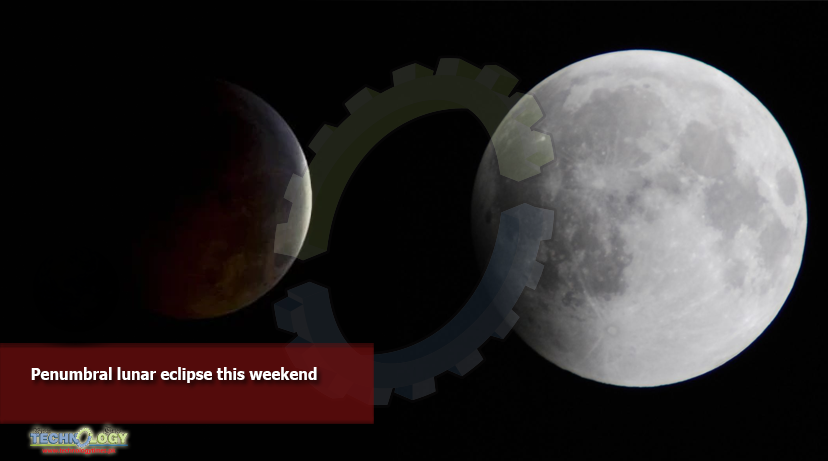A faint shadow from the Earth is cast over part of the Moon during a penumbral lunar eclipse, seen from Manila, Philippines. Early Saturday, Feb. 11, 2017, a partial eclipse and Comet 45P will share the sky.

A lunar eclipse is when the moon passes through the Earth’s shadow. A total lunar eclipse happens when the sun, earth, and moon are perfectly aligned, and the earth prevents the sun’s light from reflecting off the moon’s surface. As a result, the moon can look reddish because the Earth’s atmosphere absorbs all the other colors, similar to what happens when we see color at sunrise and sunset.
A penumbral lunar eclipse happens when the sun, earth, and moon are imperfectly aligned. So, the moon only passes through the faint, outer part of the Earth’s shadow, called the penumbra, instead of the whole shadow.
Since the moon only passes through the penumbral, the won’t be much of a difference. But some might notice a dark shading on the Moon’s face mid-eclipse.
Why doesn’t this happen every month?
The Moon makes a full orbit around the Earth every 27.3 days, and 29.5 days to change from New Moon to New Moon.
But just like the Earth is tilted on its axis as it orbits the Sun, the Moon’s path around Earth is also tilted. This tilt allows for the moon to avoid the Earth’s shadow most of the time.
Will we be able to see this in Ohio?
The July 4-5 penumbral lunar eclipse will be visible in North America, South America, Southwest Europe and Africa.
If you’re up late over the holiday weekend in central Ohio, the event will be visible between 11 p.m. on Saturday and 2 a.m. Sunday.
However, our visibility of the eclipse will be dependent on the weather. Right now it looks like there might be a few clouds Saturday night that try to cover up the view, alongside continued warm and muggy conditions.
For the latest on the forecast, keep checking in with NBC4i.com/weather, or on the NBC4 mobile weather app.
What time is this happening?
This will be happening late Saturday, July 4 into the very early morning hours of Sunday, July 5. Here’s a breakdown of the timeline:
11:07 p.m.: Penumbral Eclipse begins
The Earth’s penumbra start touching the Moon’s face
12: 29 a.m.: Maximum Eclipse
Moon is closest to the center of the shadow
1:52 a.m.: Penumbral Eclipse ends
The Earth’s penumbra ends
When is the next one?
Lunar eclipses are much more common than solar eclipses. While both are rare, if you miss this one, here is a list of when Ohio will see other eclipses:
- July 4-5, 2020: Penumbra Lunar Eclipse
- November 30, 2020: Penumbra Lunar Eclipse
- May 26, 2021: Partial Lunar Eclipse
- June 10, 2021: Partial Solar Eclipse
- November 19, 2021: Partial Lunar Eclipse
Originally Publish at: https://www.nbc4i.com/
